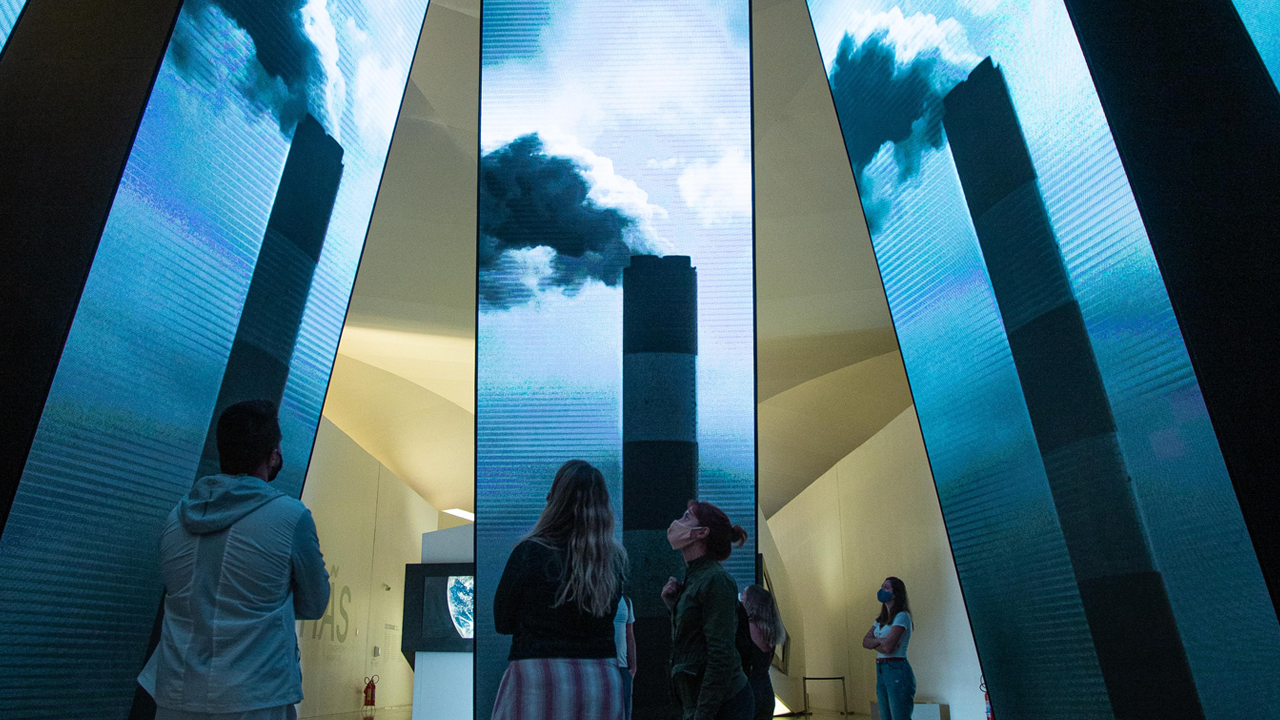Behind the scenes: from science to the Museum of Tomorrow

Museum of Tomorrow uses IPCC and International Union for Conservation of Nature reports to update its Long Term Exhibition
By Davi Bonela and Felipe Floriano*
There is a growing consensus in the scientific community that the current economic development model has led the planet to a new geological epoch, the Anthropocene.
As a science museum that addresses the opportunities and challenges humanity will face in the coming decades, the Museum of Tomorrow used the newest IPCC report and the latest version of the International Union for Conservation of Nature's Red List to carry out more than 50 updates to your Long Term Exhibition. With this, the research work, which is part of the actions of the Observatory of Tomorrow, sponsored by Shell, brings its visitors the most current knowledge about climate change and the state of global biodiversity today.
Updates were carried out in three of the five areas of the long-term exhibition – Earth, Anthropocene and Tomorrows. On Earth, these updates took place in the Cube of Matter through new information about the difference between climate and temperature and the role of greenhouse gases in increasing the planet's temperature. In the Anthropocene, the updates are in the interactive Global Impact, bringing data from the new IPCC report on ongoing changes in the climate, as well as the consequences for life on the planet, such as, for example, that the Arctic is likely to be virtually no sea ice in summer, at least once before 2050.
Finally, in Tomorrows, in the Planet area, visitors are presented with new scenarios of global average temperature increase reported by the IPCC, as well as alarming data for the coming decades. For example, in the five scenarios presented, the most ambitious target of the Paris Agreement – limiting warming to 1.5°C – is exceeded at the beginning of the next decade, ten years ahead of schedule.
Numbers of registered and endangered species increase
New information based on the most recent version of the International Union for Conservation of Nature's Red List can also be found by visitors at the interactive 'Global Impact' in Anthropocene. The update shows that of the more than 140,000 species registered on the Red List, more than 40,000 are threatened with extinction. Before the new coronavirus pandemic, there were more than 112,000 species registered, with more than 28,000 threatened.
Currently 13% of bird species, 26% of mammals, 41% of amphibians and 21% of reptiles are threatened with extinction. Also threatened are 37% of sharks and rays, 33% of coral reefs, 34% of conifers and 28% of selected crustaceans.
Exhibition had more than 160 updates in 2021
Last year, in addition to updates from the new IPCC report and the International Union for Conservation of Nature Red List, hundreds more were made throughout the Long Term Exhibition. Many of them in Terra Nestes Dias, in the interactive Cube of Matter, in which 10 images from NASA and the European Space Agency of our planet seen from above are inserted monthly. As well as in the Cave of Understanding, in Anthropocene, with 8 videos by Agence France-Presse and Deutsche Welle about important facts of our society and our planet.
* By Davi Bonela, Scientific Development Coordinator, and Felipe Floriano, Scientific Development Analyst at Museum of Tomorrow.
Museum of Tomorrow is an Applied Sciences museum which explores the opportunities and challenges which humanity will be forced to tackle in the coming decades from the perspective of sustainability and conviviality. Launched December 2015 by Rio de Janeiro City Hall, Museum of Tomorrow is a Culture asset from Rio's Secretary of Culture currently managed by Instituto de Desenvolvimento e Gestão (IDG). Example of a well-succeeded partnership between public power and private initiative, it has already received over three million visitors since opening. With Santander Bank as a Master Sponsor and a wide network of partner sponsors as Shell, IBM, IRB-Brasil RE, Engie, Grupo Globo and Instituto CCR, the museum was originally conceived by Roberto Marinho Foundation.